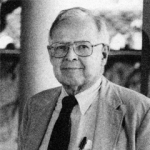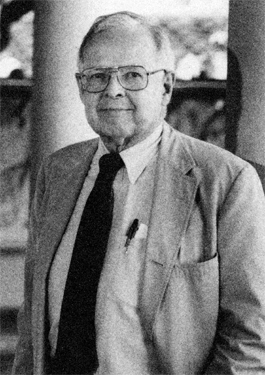 E. Howard Brooks had a long and storied history with the Claremont Consortium before becoming president of Scripps College in 1989. He began as provost of The Claremont Colleges in 1971 after more than two decades of service to Stanford University, where he worked in a variety of senior administrative positions and as consultant to several foundations.
E. Howard Brooks had a long and storied history with the Claremont Consortium before becoming president of Scripps College in 1989. He began as provost of The Claremont Colleges in 1971 after more than two decades of service to Stanford University, where he worked in a variety of senior administrative positions and as consultant to several foundations.
President Brooks transitioned to vice president of planning and development for Claremont McKenna College before becoming provost of Scripps College in 1987. He was appointed acting president in July 1989 by the Board of Trustees to serve until his requested retirement on June 30, 1990.
During his presidency, President Brooks worked to diversify the Scripps College syllabus and develop a truly interdisciplinary liberal arts model. In a spring 1990 Scripps Bulletin interview, Brooks said, “I believe very much in a general education core.” He believed that the College could not continue to portray itself solely as a women’s college that emphasized the humanities and the arts. “In the future, Scripps will perhaps be described as a residential liberal arts college for women with a strong central core in the humanities and arts,” he said.
President Brooks also worked to improve faculty involvement in key College decisions. He restructured and redefined the positions of dean of faculty and dean of students and reorganized the budget committee so that the faculty had a say in budget distribution. He also advocated for an improved balance in cross-registration across the Claremont Consortium. In all, he said, “we’ve made Scripps a feistier institution.”
Brooks passed away in his home in San Luis Obispo in September 2007 at age 86. He is survived by his wife, Courtaney; two daughters, Robin Pollock and Merilee Runyan; and three grandchildren.


